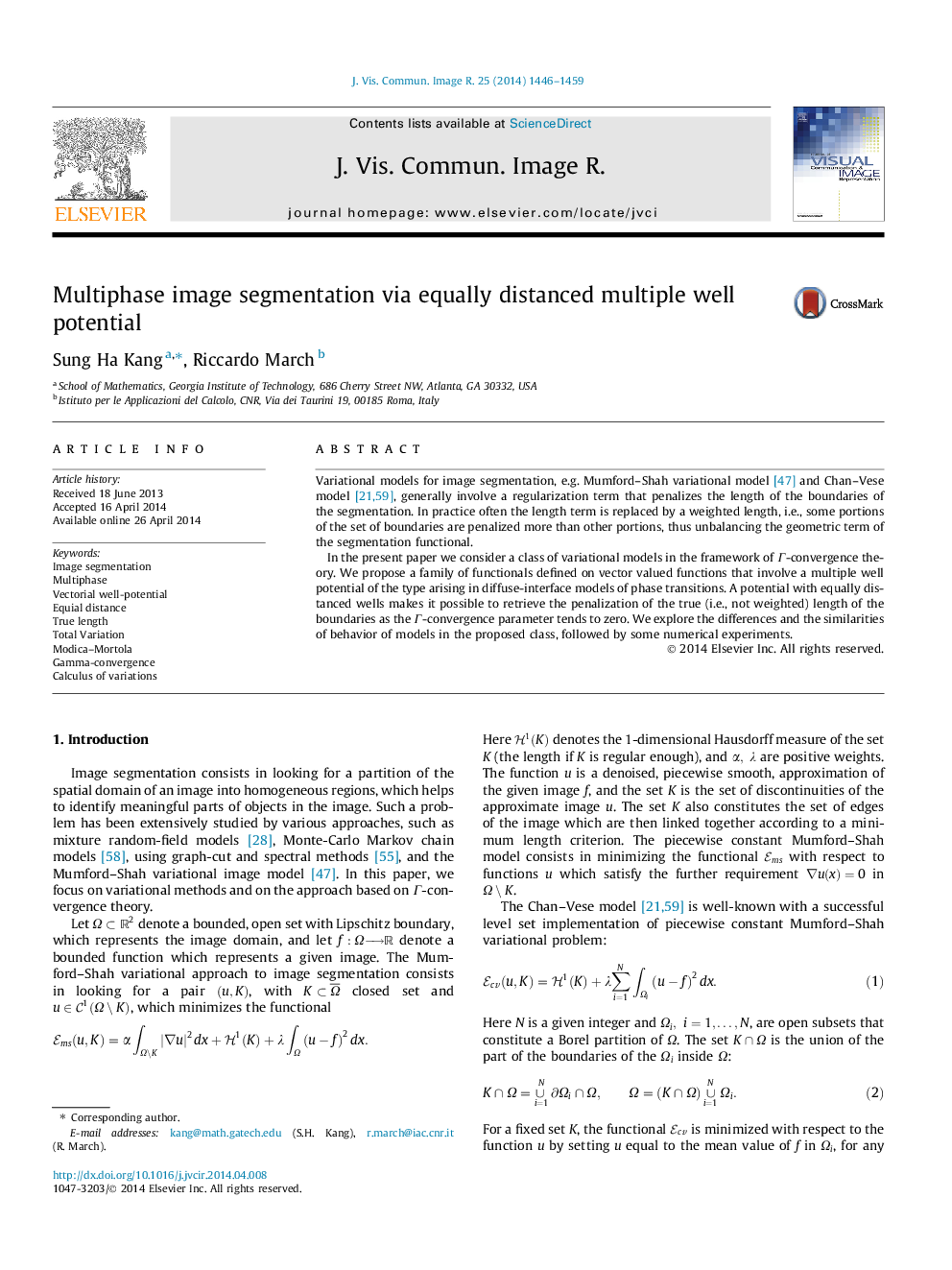| Article ID | Journal | Published Year | Pages | File Type |
|---|---|---|---|---|
| 528620 | Journal of Visual Communication and Image Representation | 2014 | 14 Pages |
•We propose models which give true length approximation via ΓΓ-convergence.•We consider various regularizing functions to give sharp interface.•We explore the differences and similarities of models.•We present examples showing the difference in true length vs. weighted length.•Numerically for noisy images true length Total Variation is the most stable.
Variational models for image segmentation, e.g. Mumford–Shah variational model [47] and Chan–Vese model [21] and [59], generally involve a regularization term that penalizes the length of the boundaries of the segmentation. In practice often the length term is replaced by a weighted length, i.e., some portions of the set of boundaries are penalized more than other portions, thus unbalancing the geometric term of the segmentation functional.In the present paper we consider a class of variational models in the framework of ΓΓ-convergence theory. We propose a family of functionals defined on vector valued functions that involve a multiple well potential of the type arising in diffuse-interface models of phase transitions. A potential with equally distanced wells makes it possible to retrieve the penalization of the true (i.e., not weighted) length of the boundaries as the ΓΓ-convergence parameter tends to zero. We explore the differences and the similarities of behavior of models in the proposed class, followed by some numerical experiments.
